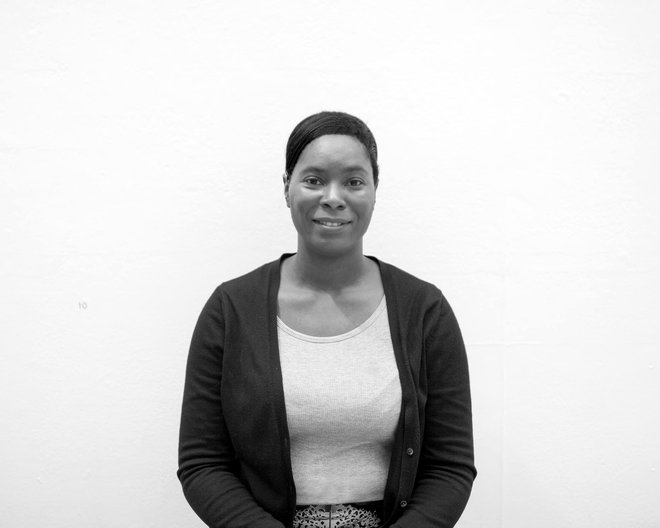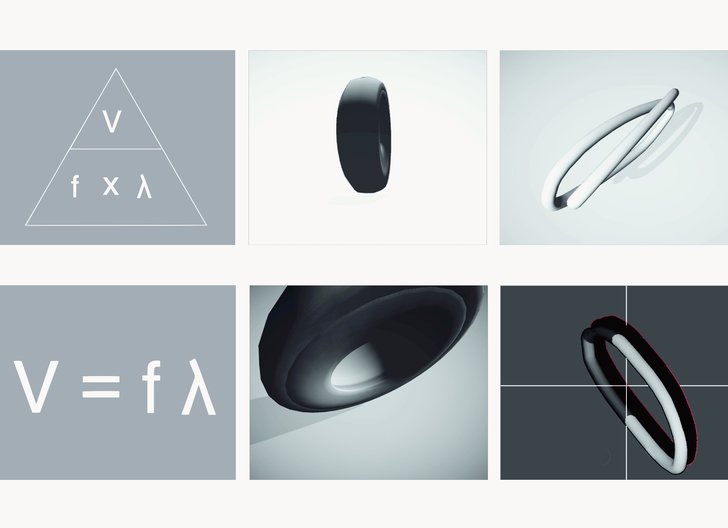3 September 2019
NATASHA TROTMAN IS AN INCLUSIVE DESIGNER, MAKER AND RESEARCHER WORKING TO SHIFT MAINSTREAM AND TRADITIONAL APPROACHES TO ONE THAT IS INCLUSIVE. AS ONE OF OUR 10X10 SELECTIONS WE CAUGHT UP WITH HER ABOUT HER APPROACH AND PRACTISE.
Tell us about yourself or your practice.
I am an Inclusive designer, maker and researcher working with information, multi-sensory experience and Human centred design; an information and Experience design graduate from the Royal College of Art, and a multi-modal communicator (and British Sign Language speaker), researcher and psychosocial creative SEN/D practitioner.
My work takes sensorial neurodivergent experiences as a starting point; forming physical provocations and interactions through investigative play to neurodiverse audiences and visitors; with my most recent works falling into the realm of neurodiversity and non-typical ways of experiencing and processing. Exploring notions and western constructs around neurotypes and lived experiences through a multi-modal design and neurodivergent lens and interactive installations, performances and participatory events.
One of my aims and hopes is to provide inspiration, through my practice and breaking down barriers and providing encouragement to my neurodivergent siblings and cognitive cousins of today and tomorrow. I hope my practice demonstrates that ambition and adding value in your own unique way is possible regardless of disability or impairment.
With wide ranging work that includes the international research project Design and The Mind with the Royal College of Art’s Helen Hamlyn centre for design and The Wellcome Trust, that focuses on creation and engagement with neurodiverse groups and neurodivergent, non-typical individuals within Wellcome Collection’s museum, library and research spaces; based at The Wellcome Collection Hub. Alt Experiences, an interactive umbrella project that aims to harness empathy, agency and awareness concerning divergent neurotypes through provocations and interactive mixed methods, including analogue and digital interactions.
My input into this field has resulted in my being nominated for the Helen Hamlyn Snowdon Award for Disability/Inclusive Design along with inclusion on a power list of the UK’s most influential people with a disability or impairment.
The suite of skills gained in Graphic Design, Information Experience Design and Inclusive/human centered Design; with Inclusive/human centered Design being my specialist area.Through working on various projects ranging from collaborations to individual work enables me to harness what I call practice based transcendence, this enables me to hover above a complex set of disciplines; using those skills when appropriate.
What are you working on at the moment?
I am working on a range of projects which includes the international research project Design and The Mind with the Royal College of Art’s Helen Hamlyn centre for design and The Wellcome Trust, which focuses on creation and engagement with neurodiverse groups and neurodivergent, non-typical individuals within Wellcome Collection’s museum, library and research spaces; based at The Wellcome Collection Hub. Emergent Divergent and Alt Experiences, interactive umbrella projects that aim to harness empathy, agency and awareness concerning divergent neurotypes through auto-ethnography, provocations and interactive mixed methods, including analogue and digital interactions.
What key issues are you addressing with your work? / What impact do you hope to see through your work? / Why is design important? (feel free to answer one, or all!)
I aim to explore and address human centred neurodivergent offerings and how we might do that better through inclusive human centred approaches and design within heritage sectors and the wider sectors through transdisciplinary and post disciplinary methods and approaches; aiming to not only challenge how we think and feel about health, wellbeing and disability but also notions of proximity to disability and the spaces in between where we share values, hopes and dreams. Shifting inclusive approaches from one framed as a risk to one framed as an ambition.
Tell us about something you’ve seen that’s inspired you recently? /Tell us about something you’ve worked on that’s made you feel proud. (please answer one or both)
Daily inspiration points are necessary; as despite being extremely passionate about what I do, I spend a large amount of my time doing so in neuro-normative, mainstream settings which can at times be challenging due to my neurodivergence. I ensure that inspiration is incorporated daily through my networks and along with my own self-care first aid kit which helps me better navigate challenging environments; due to the nature of my work in various fields and my non typical lens (way of being, processing and experiencing the world), I believe working within these spaces and contributing to change in a hands on fashion although challenging at times is still needed, and can assist with positively impacting notions on proximity to disability and impairments with a view to the creation of inclusive step changes.
I recently went to see a neurodivergent choir perform an interactive multi-modal, augmentative, alternative communication song - it had various access points that enabled everyone to be involved; it left me thinking, why aren’t all performances like this?
What is the role of design in addressing/ communicating global issues? What are the challenges you face in communicating your work to a global audience?
With Brexit fast approaching we are facing uncertain times. Europe’s digital eco-system remains fractured across sectors, practices and disciplines and new approaches and languages will be more important than ever. Those in these particular areas as well as the broader communities and neighbouring sectors can shape this going forward and may need to ask how we remain a part of this multi-modal design and value based eco-system. Design, I believe, will provide an opportunity to collectively work towards an integrated approach.
I am passionate as to how we find approaches to new ideas enabling horizontal approaches and engagements to be of service to all within society and coin what underpins my approaches and methods as a ‘force of nurture’. I believe finding new ways to innovate within the field of art and design and agile cross sector collaborations are vital, so that all within society can be a part of a new inclusive creative economy and exchange system where the needs and values of a nurtured society can be reflected in the design offerings and engagements people see, experience and access/use.
One of the challenges when communicating to varied and global audiences is communicating the value of the work around inclusivity and Human centred design, the social model of disability (as opposed to the medical model) and how this can shift and change dependent on where and who you are in the world and the adjustments needed (or not) to ensure that this is not lost in ‘translation’; Working on various transdisciplinary intersectional projects ranging from collaborations to individual work has enabled me to harness what I call practice based transcendence, this leads me to believe that learning the different ‘languages’ of each group- this includes cultural, social, economic and disciplined based constructs provides a better position to share information and collaborate in ways that are meaningful and constructive. I believe, when done in this way research and knowledge transfer between and through industries and societies can contribute to change and are at the foundation of how we are able to take on and reframe the national and international design landscape.
How do you approach inclusivity and accessibility in your work? (please answer one or all!)
I believe a key component to an inclusive approach and project has to be the involvement of the people the work is focused on; from the beginning, not as an afterthought. Whilst working on Design and the Mind I engaged a core group of participants whom I refer to as the Citizen Researchers; a diverse group of people of varied abilities, backgrounds, ethnicities and ages; they are experts in their own lived experience and explorers of Wellcome Collection and Wellcome Hub. Throughout the project, the Citizen Researchers’ contributions have informed the iterations and offerings of solutions to the issue of accessibility and inclusivity. Placing a group of individuals/community the project is focused on at the core of the project has provided a space, platform and empowerment for the neurodiverse, highlighting that different voices, thoughts, feelings and needs matter.
Category
British Council Project


